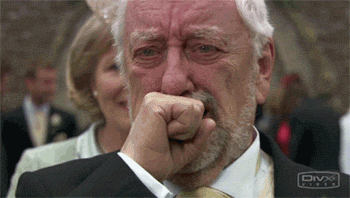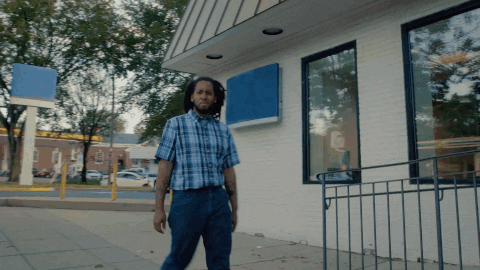I fear that I may be creating a lot of enemies with this blog post, but I’m going to take the risk. It is also important to point out that I am not necessarily getting enjoyment out of ripping apart what is known to be THE QUINTESENTIAL teen movie. Sometimes the truth hurts, and it’s painful to write about how I fell for the exact same stereotypical movie tropes as the rest of society. Like most viewers, the first time I watched The Breakfast Club was as a young teenager, and I just loved the authentic feel of the child-adult relationship. As I watched the movie through the years I began to enjoy it less and less. The sexism stuck out like a sore thumb, the stereotypical teenage anger felt exaggerated, and real young-adult troubles were either disregarded or normalized.
My growing apart from this movie is an example of how Bell Hooks’ Oppositional Gaze is sometimes applied before you’re aware that you’re using it. For many adults, watching this movie reminds them of their own teenage selves. The pleasure they get from viewing their “ideal selves” is addressed by Laura Mulvey in her essay Visual Pleasure and Narrative Cinema. Mulvey states “…the cinema has structures of fascination strong enough to allow temporary loss of ego while simultaneously reinforcing the ego. The sense of forgetting the world as the ego has subsequently come to perceive it is nostalgically reminiscent of the pre-subjective moment of image recognition.” (Mulvey 32) It’s quite possible that the viewers who really relate to this movie have falsely seen themselves within these morally unjust characters. So, let’s get down to the nitty gritty.

This film is famous for embracing stereotypes and not deviating from them. We have John Bender as The Criminal, Andrew Clark as The Jock, Brian Johnson as The Brain, Claire Standish as The Princess, and Allison Reynolds as The Basket-Case. These five high schoolers identify with one another despite their conflicting personalities. They all seem to blame their negligent parents for their shortcomings. Now, I could write a book on the dynamic between these five characters, but we’ll just focus on the problematic aspects right now.

The Breakfast Club blatantly promotes misogyny and sexual harassment. The interactions between John Bender and Claire Standish are the most contentious. There are upwards of five occasions on which John Bender verbally harasses Claire, hounding her to reveal her sexual history. He refers to her several times as “Queenie,” “Sweets,” and “Cherry.” His persistence is so invasive that to the viewer, it becomes common practice by the end of the movie. There are two particular scenes where Bender takes his vulgarity too far. The first is when he describes sexual foreplay to Claire even after she asks him to stop. He continues to verbalize his desire while scanning her body up and down. Here we have a clear example of scopophilia, the pleasure of looking. The second is more physical. It’s the underwear scene.
John Hughes must have something for Molly Ringwald’s underwear.
In this situation, Bender is hiding under a table and happens to get a clear view up Claire’s skirt. The next thing you know, Claire is crushing Bender’s head between her legs. The sexual pervasiveness and unwanted actions in today’s standards would earn that scene the title of sexual assault. But, then again, why would it be okay in the year of 1985? During the filming process, Molly Ringwald, and her mother, objected to the scene in its entirety. The scene managed to make the final cut, but its important to note that Molly is not the actress who is objectified. She wasn’t legally allowed to do it because of her young age. Personally, I am mystified by the fact that director John Hughes found it to be a significant enough event in the story to go to such great lengths to include it.
The worst part about this sexual harassment that continues for 157 minutes is the fact that Claire nonetheless manages to “fall in love” with Bender at the end. This young, insecure girl still had respect for her assaulter, propagating the belief that women must accept men for who they are. They must be the submissive in the relationship. Unfortunately I have been a recipient of verbal sexual harassment, and I can assure you that I have never felt the need to show him any appreciation or congeniality. Another astonishing event towards the end of the film is the transformation of the Basket-Case. Allison is often described as the least significant character of the group, but I find her to be the most interesting. That is until John Hughes destroys her uniqueness. Within the last five minutes of the film, Claire and Allison have a makeover session which leaves Allison walking out of the high school looking like a normal, pretty girl. As soon as Andrew Clarke lays eyes on her, he is smitten (even though he had gotten to learn more about her complexities within the past 8 hours and hadn’t shown an interest in her at all; in fact, he seemed slightly disturbed by her prior to the makeover).
But really, who gives a flying fuck about her personality?

 *Me internally*
*Me internally*
Another frustrating aspect of the film is the dialogue between the five kids. I don’t believe there was a single civil conversation in the entire film. The only words that came out of their mouths were meant to be offensive or defensive, with the occasional offhanded comment by Brian. When they do try to become serious, its thrown to the side. Case in point: Brian’s struggle. The pressure he feels to excel in school is so great that he can’t deal with failing a project. He thinks that he needs to kill himself if he can’t be perfect. Rather than getting this young man help, they put him in Saturday detention.

After he tells the group of his predicament, the only thing stated is “Killing yourself is not an option” and within 35 seconds, everyone is laughing. Hughes’ attempt at digging deeper into the adolescent mind really scrapped the surface here. It had so much potential, and yet that is the last you hear of his struggle. It’s as if his suicidal thoughts just completely vanished by the final scene. And as if to seal the lack of depth in this movie, the conclusion of the girls love lives had to be the last thing on the viewers mind.
*Rolls Eyes*
These teenagers were meant to represent our former selves, the kids we once were. Over time they have morphed into images of what adults want to think of teenagers, not what the teenagers are actually like. The female characters are eventually “whipped” into their societal roles. They were dominated by their male counterparts. By viewing this cinematic story telling with the phallocentric gaze cited in Hooks’ text, you can come to the realization that this movie isn’t meant for teenagers. It’s meant for lost adults who want to remember their troubled selves in a different light.

Hooks, Bell. “The Oppositional Gaze: Black Female Spectators.” Movies and Mass Culture. Rutgers University Press. 1992. pp 247-253
Mulvey, Laura. “Visual Pleasure and Narrative Cinema.” Feminist Film Criticism. Indiana University Press. 1990. pp
Ringwald, Molly. “What About ‘The Breakfast Club’?” The New Yorker, The New Yorker, 17 Apr. 2018, http://www.newyorker.com/culture/personal-history/what-about-the-breakfast-club-molly-ringwald-metoo-john-hughes-pretty-in-pink.32





